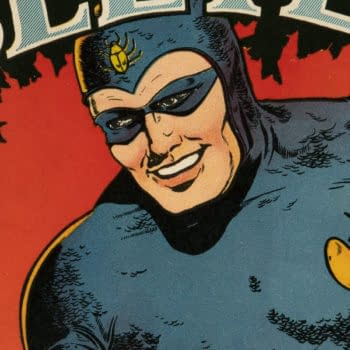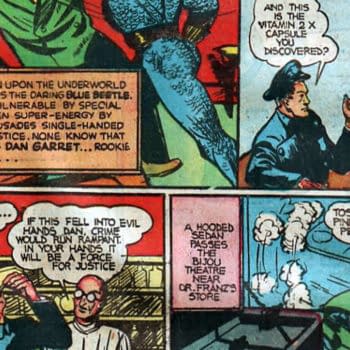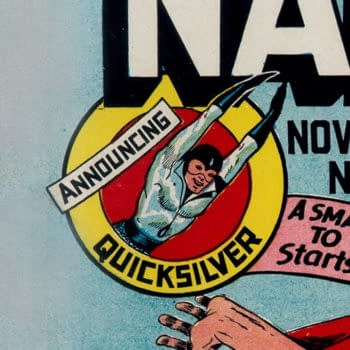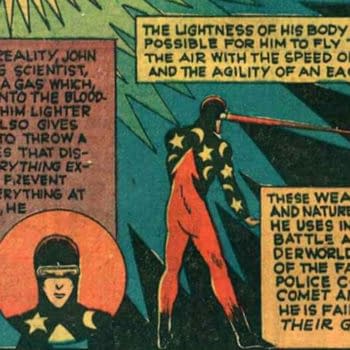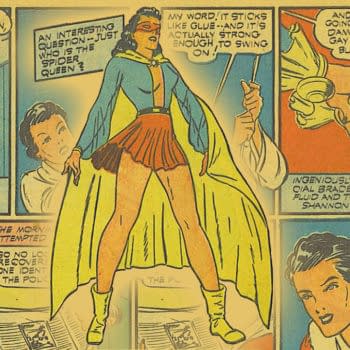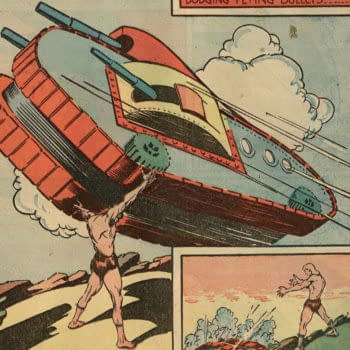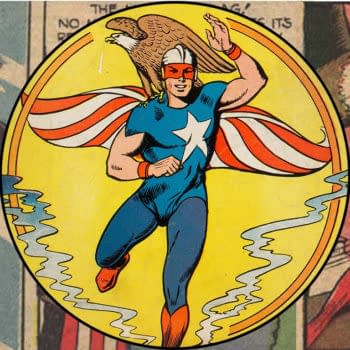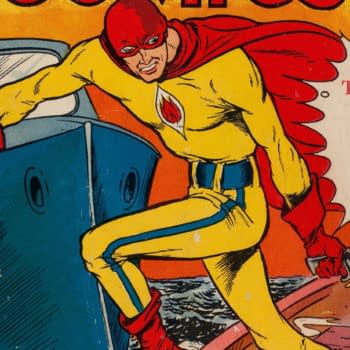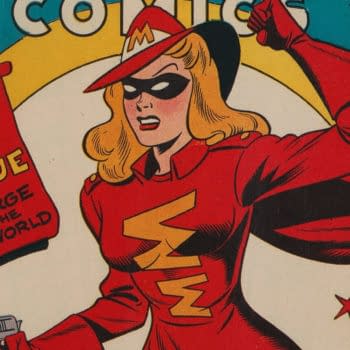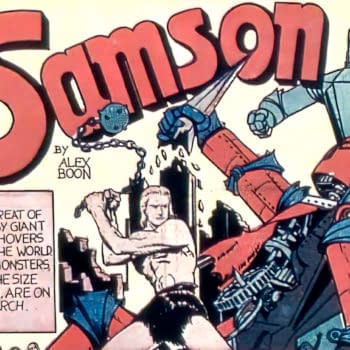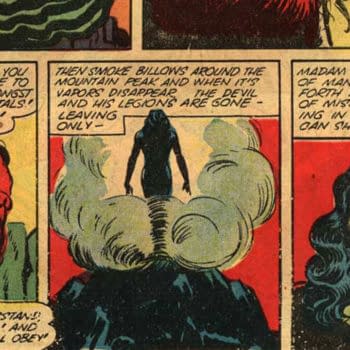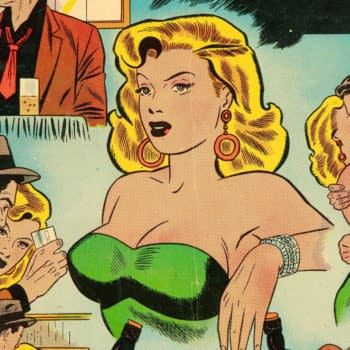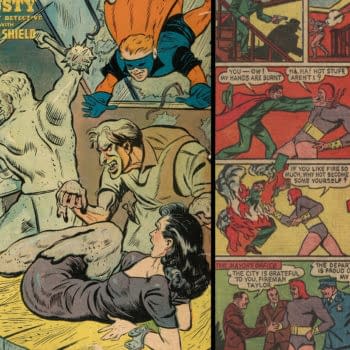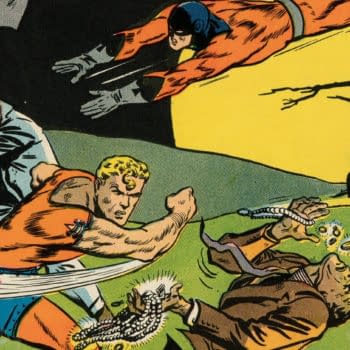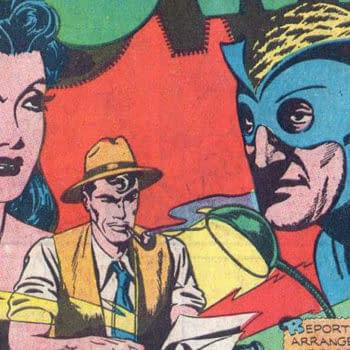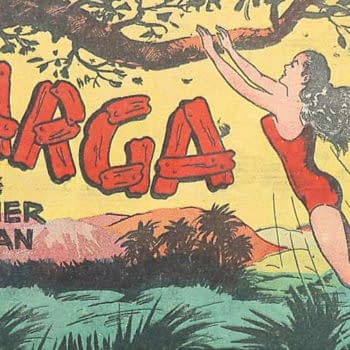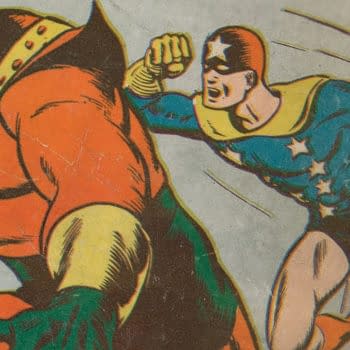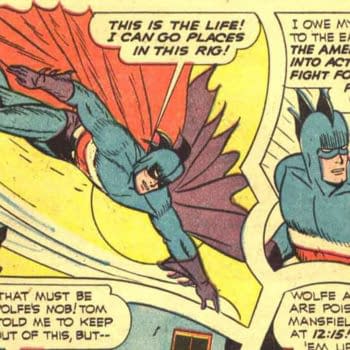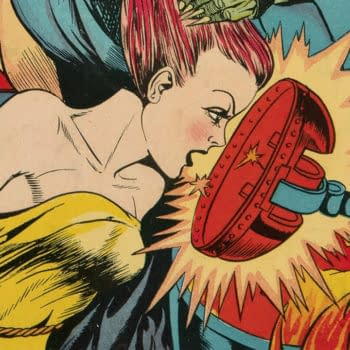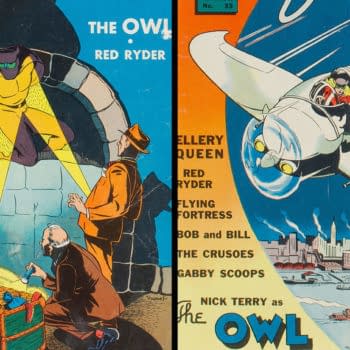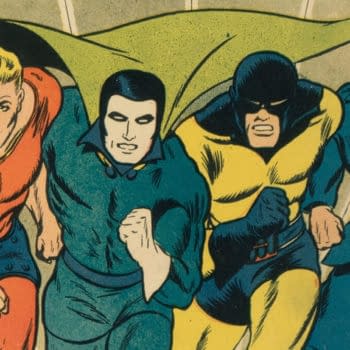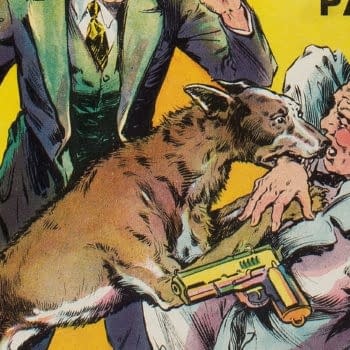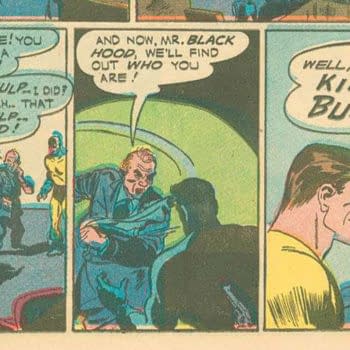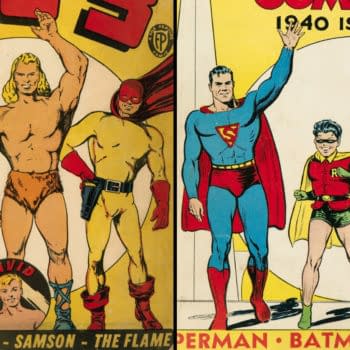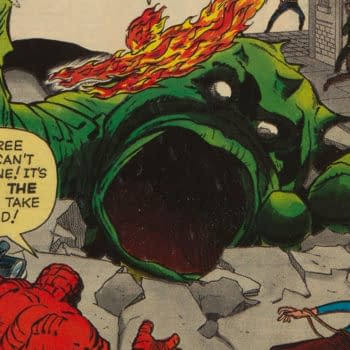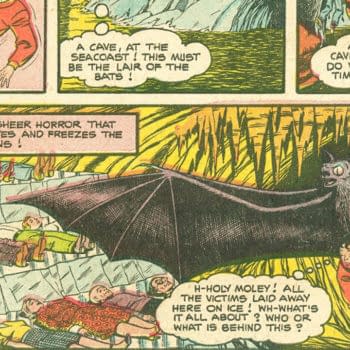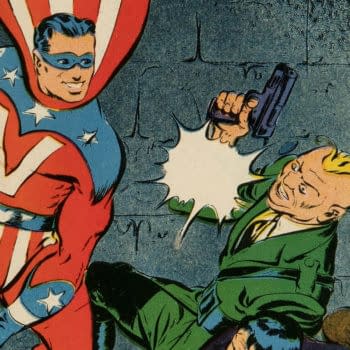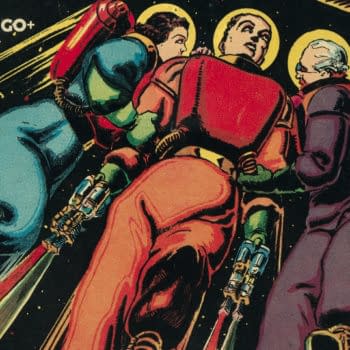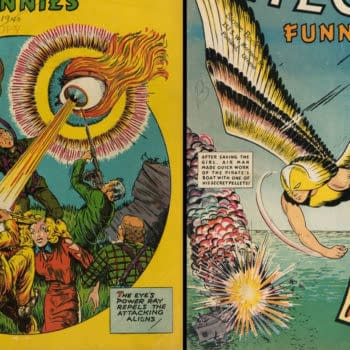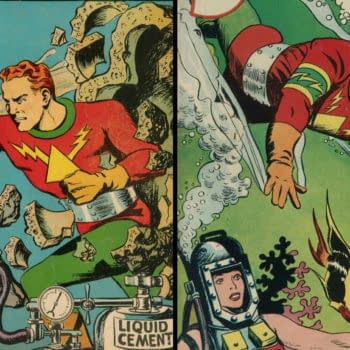After Victor Fox got into financial trouble, his printer Holyoke published the Blue Beetle #12-30, and those issues are a wild ride.
Vintage Paper Archives
1940 was Blue Beetle's year, with the launch of his own series, a newspaper strip and a radio show which combined to create a new origin.
National Comics #5 features an expanded origin for the Quality Comics version of Uncle Sam, plus the debut of speedster Max Mercury.
MLJ's the Comet has one of the most interesting story arcs of the Golden Age, and he likely inspired one of the X-Men in the process.
Chemist Shannon Kane aka the Spider Queen developed and used wrist-mounted web shooters to swing from buildings and entangle the bad guys.
Fox Feature's Samson was a superhero based on the biblical figure of the same name, and like his namesake, his hair was the key to his power.
A patriotic superhero with a weird helmet and an intelligent eagle sidekick, Captain Flag and Yank debuted in Blue Ribbon Comics #16.
The Golden Age's first Flame-based superhero, Fox Feature Syndicate's The Flame debuted in Wonderworld Comics #3.
The character Miss Masque took over Standard/Better/Nedor's Exciting Comics and America's Best Comics in the late Golden Age.
Fantastic Comics #3 might be Lou Fine's most famous cover art, but the story behind it happened in Fantastic Comics #4.
Discover Madam Satan's sinister beginnings in the elusive Pep Comics #16, a lurid gem from MLJ's Golden Age era.
All True Romance #11 features some of Pete Morisi's best work for Comic Media, an unusual Don Heck story, and a mix of the romance and crime genres.
The character Fireball, who debuted in Pep Comics #12 cover-dated February 1941, was MLJ's answer to Marvel/Timely's Human Torch.
The Zip Comics #25 Steel Sterling story written by Robert Kanigher seems to have been inspired by the 1941 Yankees/Dodgers World Series.
The Black Owl went through two quick reboots in the early days of Prize Comics -- one from a character called K the Unknown.
The product of a "mad physio-biologist" and the creation of composer George Gershwin's cousin, Marga was at home in Weird Comics.
Before the Guardian and the Newsboy Legion there was Captain Freedom and the newsboy gang called the Young Defenders in Speed Comics.
It was hard to be unique in the WWII patriotic hero market, but American Eagle's origin gave him "the strength and bouyances of an eagle."
Joe Simon's brief tenure at Fox Feature Syndicate produced a number of memorable covers for the publisher, like Fantastic Comics #8.
Created by Frank Thomas under the guidance of editor Oskar Lebeck, the Owl was Dell Publishing's answer to Batman.
Jackpot Comics was an MLJ anthology series which featured some of the publisher's most popular characters in sometimes horror-themed tales.
Blue Ribbon Comics is the debut comic book title from MLJ Magazines, and Rang-A-Tang the Wonder Dog was its first star.
A funny thing happened to the Black Hood on his way out of the Golden Age. He was unmasked, and decided to keep fighting crime anyway.
It's clear from the cover of Big 3 #1 that this title combining Fox Feature's top heroes was inspired by DC Comics' New York Worlds Fair 1940.
The highest graded copy of the debut of the World's Greatest Comic Magazine, Fantastic Four #1 CGC 9.6, has just set a record at auction.
Whiz Comics #155 is the beginning of the end of an important chapter in American comic book history, the entire Fawcett line would soon end.
V-Comics was inspired by the details of the legendary WWII British propaganda campaign that launched V for Victory symbolism in 1941.
Hugo Gernsback's Superworld Comics #2 has a cover by the legendary Frank R. Paul and a story inspired by Gernsback's conflict with Bernarr Macfadden.
Under the editorship of Lloyd Jacquet, Centaur's Keen Detective Funnies introduced a wild range of characters like The Eye and Air Man.
The star of Sure-Fire Comics, Flash Lightning got his powers from an amulet given to him by an ancient Egyptian figure before Dr. Fate.



